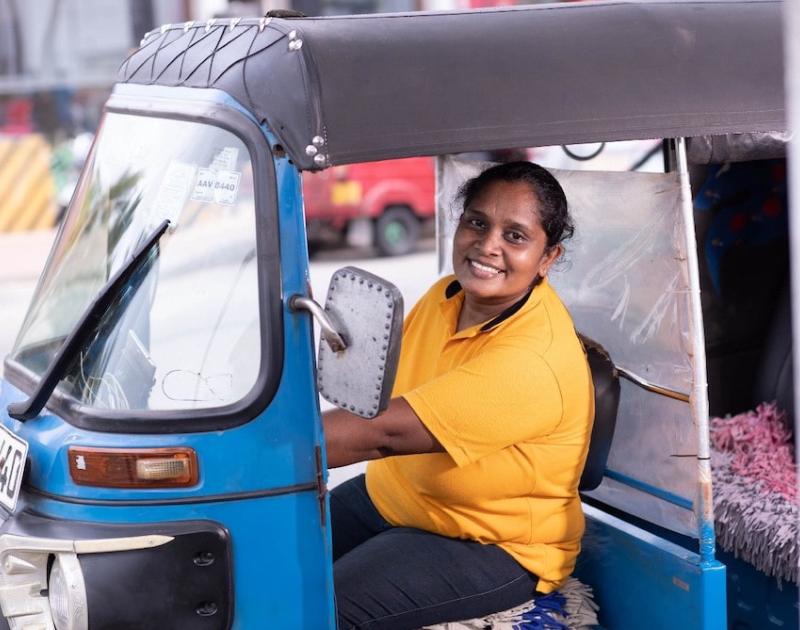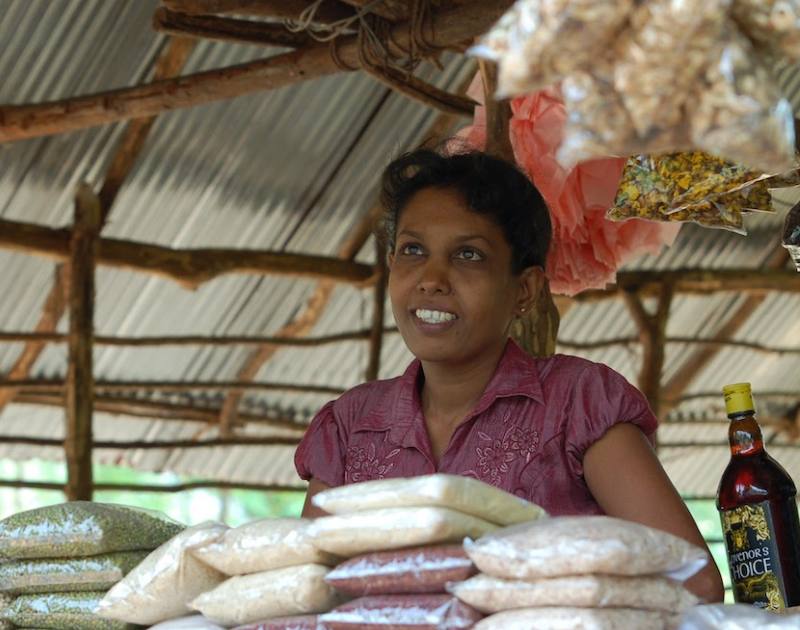
- Home
- Knowledge Insights
- How Can Sri Lanka Improve Gender Considerations in its Trade Agreements?
In this article on gender considerations in Sri Lanka’s free trade agreements, CSF Visiting Fellow Dr Janaka Wijayasiri argues that as the country begins to explore FTAs once again, it is timely to consider mainstreaming gender into Sri Lanka’s trade policy and trade agreements taking into the gender inequality in the country.
Sri Lanka has preferential access to its main international markets through non-reciprocal arrangements (EU and US GSP schemes) and reciprocal trade agreements. Sri Lanka participates in two reciprocal regional and three bilateral free trade agreements: Asia-Pacific Trade Agreement (formerly known as Bangkok Agreement), South Asian Free Trade Area (which superseded the South Asian Preferential Trade Agreement), Indo–Sri Lanka Free Trade Agreement, and the Pakistan–Sri Lanka Free Trade Agreement and Singapore-Sri Lanka Free Trade Agreement (WTO,2016). In addition, Sri Lanka has been negotiating comprehensive free trade agreements with China and India for a while to deepen and widen Sri Lanka’s economic ties and trade prospects with two of the country’s important trading partners.
The Government of Sri Lanka (GSL) now wants to revive and upgrade its trade negotiations and agreements. Thus, it would be timely to consider mainstreaming gender into Sri Lanka’s trade policy and trade agreements taking into the gender inequality in the country and international experiences and practices in gender mainstreaming of trade agreements. This article will also identify and discuss ways in which to include gender considerations in trade agreements. Furthermore, it will discuss the main problems in effectively mainstreaming gender into trade agreements and how to address them.
In terms of gender equality, Sri Lanka has made admirable progress on key gender indicators relating to health and education but ranks poorly on the UNDP Gender Inequality Index (GII) at 90th place out of 162 countries in 2019 (UNDP,2020). While Sri Lanka’s progress is reasonable compared to other countries in South Asia, there is considerable gender inequalities in the country, particularly in the political and economic spheres (ADB,2016). Women remain poorly represented in parliament and at senior levels in the public and private sectors (ADB, 2015). Despite expanding the services sector, women are over-represented in agriculture and undertake unpaid family work. Women’s participation in the labour force is low while their underemployment and unemployment rates are poor. For example, labour force participation rate for women is 35% compared to 75% for men, one of the lowest in the region while unemployment rates amongst women are twice as high compared to men (ADB,2016). Women can be found in low productivity/low-income work in agriculture, labor-intensive export-oriented manufacturing (namely garments), and services (education, health, telecommunications, IT, travel, and financial services) (ADB,2015). Women are at a disadvantage due to horizontal and vertical gender division in the labour market, which has affected their occupation mobility and opportunity to hold higher-paid jobs (ADB,2015).
While there are broad policy commitments to gender equality and institutional structures to promote gender equality in the country (ADB,2016), gender mainstreaming in economic policy is lacking if not absent in Sri Lanka, particularly in relation to trade policy and trade agreements (ITC,2021).
This situation is concerning given women’s substantial role in the economy, including exports and their participation as workers, businesses-owners, and consumers. Trade agreements can have a wide-ranging impact on women through reduction/elimination of tariffs, cutting of red tape, reducing non-tariff barriers, opening up the services sector, promoting investments, increasing labour mobility (UNCTAD,2020). In this regard, policymakers in Sri Lanka need to consider gender about trade policy, including trade agreements to support opportunities for women and reduce existing gender inequalities.
Gender considerations are becoming prominent in trade agreements around the world (UNCTAD,2020). Similarly, Sri Lanka can use trade agreements to level the playing field for women whilst ensuring the benefits of free trade are equally distributed between women and men (ITC,2020).
Globally, countries are looking to promote gender equality as part of inclusive economic growth and sustainable development (UNCTAD,2020). In this regard, many governments are increasingly committed to pursuing equal and inclusive trade. The 2018 Buenos Aires Declaration on Trade and Women’s Economic Empowerment and the inclusion of gender provisions in some recently concluded trade agreements reflect this (WTO,2017).
Often trade agreements refer to international standards on labour discrimination, equal pay, freedom of association and collective bargaining and other measures on gender equality (UNCTAD,2020). They also reflect on the goals of the 2030 Agenda for Sustainable Development, Convention on the Elimination of All Forms of Discrimination against Women (CEDAW), etc. Some of the more recent trade agreements go beyond and include a separate chapter on gender and trade; for example, Canada–Israel and Canada–Chile agreements (ITC, 2021). Others have made legally binding obligations and put in enforcement mechanisms to monitor gender provisions. An analysis of 292 trade agreements in force and notified to the WTO found that more than a quarter of them explicitly mentions issues related to gender (Monteiro,2018).
There are many ways to mainstream gender into trade agreements. Here is a summary of the ten policy recommendations proposed by ITC (2021), which Sri Lanka could consider:
Sri Lankan policymakers and trade negotiators can consider these recommendations in part or whole. However, it is important to note that agreements are not a panacea to address gender inequalities which require complementary domestic policies in the country (World Bank and the World Trade Organization, 2020)
This final section considers some challenges in mainstreaming gender considerations into trade agreements and puts forward possible solutions.
There is often a poor understanding of gender implications of trade policy and the use of trade agreements to empower women due to the prevalent view that trade is gender-neutral. Policymakers and trade negotiators may not see trade agreements as a tool to advance social issues, including gender consideration (Giroux,2018). Gender mainstreaming may be viewed by some as a zero-sum game, i.e. men will lose if women receive equitable access (Giroux, 2018). As such, it is crucial to incorporate a gender lens in policymaking and trade negotiations by improving the understanding of gender-related trade barriers and the different ways in which trade affects men and women. This calls for gender sensitive training of trade officials/negotiators and recruitment of a gender expert to provide advice and guidance.
There is an ack of gender-disaggregated data to inform negotiations on how trade liberalisation affects women. To date, assessments carried out consist of general impact studies of the trade agreements in Sri Lanka; none of them have focused on gender impacts. In this regard, negotiating countries could share methods for collecting gender-related trade statistics and sex-disaggregated data (UNCTAD,2020). They can also exchange experiences on undertaking gender-based analysis of trade policies and agreements.
There is insufficient political will to leverage trade agreements to empower women. The commitment to gender considerations may vary within the country and across negotiating partners. It is essential to change attitudes toward women and their roles in the country and improve women’s leadership in parliament and GSL institutions. Also, adequate resources, including financial and human resources, should be mobilized to set up gender focal points to mainstream gender into trade policies and related activities (ITC,2021).
There is a lack of expertise on gender issues within the trade ministry and relevant department, responsible for carrying out trade negotiations in Sri Lanka. While most officials in trade related ministry and related agencies have participated in capacity building in gender issues (ITC, 2021), continuous training on gender would be required to ensure that gender is mainstreamed in trade policy and negotiations.
The participation of women associations, such as the Women’s Chamber of Commerce, in the
consultation processes during trade negotiations needs to be enhanced. In this regard, the trade
ministry can put in place a mechanism to improve the participation of women’s associations in trade
policy formulation and trade agreements.
This article is based on a paper written by the author for a UNCTAD course on the relationship between trade and gender.
References


